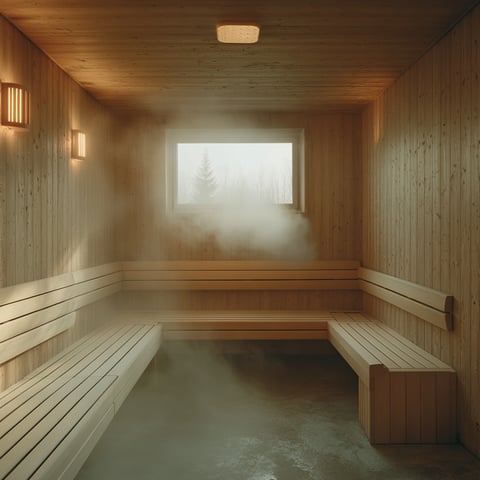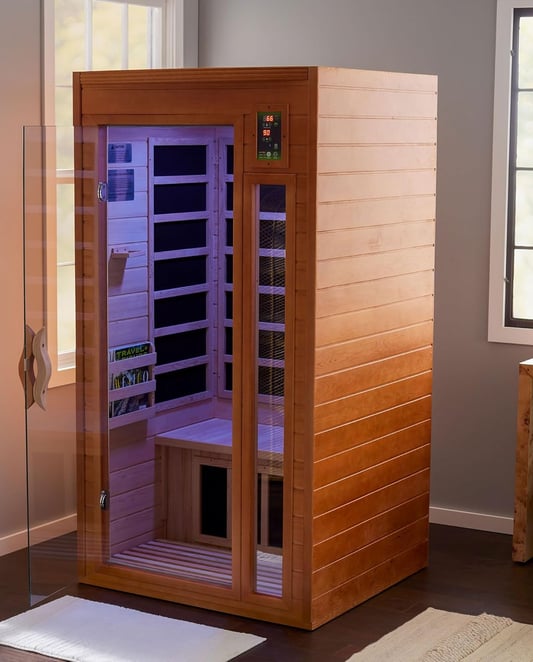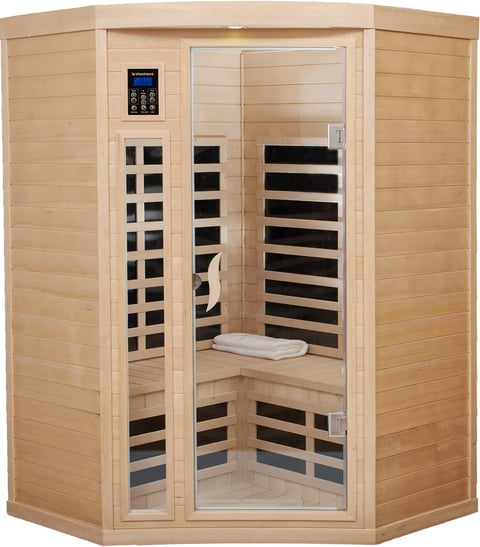Infrared vs. Traditional Saunas: Which Is Right for You?
10/21/20244 min read
For years, saunas have been praised for their health benefits and relaxation properties. With advanced technology, there is now more than one type of sauna that one can use. Among the most prevailing are infrared and the traditional or steam saunas. But how will you know which one fits your needs? This detailed guide compares infrared and traditional saunas, assessing their differences, benefits, and considerations to help you go about making a buying decision.


Understanding Traditional Saunas
Traditional saunas, also known as Finnish saunas, use a heater to warm the air within an enclosed space, typically reaching temperatures between 150°F to 195°F (65°C to 90°C). The heat can be dry or combined with steam by pouring water over heated rocks.
Benefits
Deep Sweating: High temperatures induce intense sweating, aiding in detoxification.
Muscle Relaxation: Heat soothes muscles and relieves tension.
Cardiovascular Health: Increases heart rate, improving circulation.
Considerations
High Heat Tolerance: May be uncomfortable for those sensitive to high temperatures.
Longer Heating Time: Takes time to reach desired temperature.
Space Requirements: Generally larger, requiring more installation space.


Exploring Infrared Saunas
Infrared saunas use infrared heaters to emit light that directly warms the body without significantly heating the surrounding air. Temperatures typically range from 120°F to 150°F (49°C to 65°C).
Benefits
Lower Temperatures: More comfortable for those sensitive to heat.
Deep Tissue Penetration: Infrared rays penetrate the skin, providing therapeutic benefits at lower temperatures.
Energy Efficient: Uses less energy due to lower heat requirements.
Considerations
Less Intense Sweating: May not induce as much sweating as traditional saunas.
Electromagnetic Exposure: Concerns about exposure to electromagnetic fields (EMFs), though most modern saunas are designed to minimize this.
Experience Differences: Lacks the traditional sauna ambiance.


Comparing Health Benefits
Both types of saunas offer numerous health benefits, but there are some differences.
Shared Benefits
Stress Reduction: Promotes relaxation and reduces stress levels.
Detoxification: Sweating helps eliminate toxins.
Improved Circulation: Heat causes blood vessels to dilate, enhancing blood flow.
Skin Health: Opens pores, aiding in skin cleansing.
Infrared Sauna Benefits
Pain Relief: Infrared heat can penetrate deeper, alleviating joint and muscle pain.
Weight Loss Support: Increases metabolic rate slightly, potentially aiding weight loss efforts.
Reduced Blood Pressure: Some studies suggest infrared saunas may help lower blood pressure.
Traditional Sauna Benefits
Immune System Boost: The heat can stimulate white blood cell production.
Respiratory Relief: Steam can alleviate congestion and improve respiratory function.


Temperature and Heating Methods
Traditional Saunas
Heating Method: Heats the air, which then warms the body.
Humidity Control: Option to add steam by pouring water over rocks.
Temperature Range: 150°F to 195°F (65°C to 90°C).
Infrared Saunas
Heating Method: Directly heats the body using infrared light.
Dry Heat: No steam; humidity remains low.
Temperature Range: 120°F to 150°F (49°C to 65°C).
Energy Efficiency and Installation
Energy Consumption
Infrared Saunas: Generally use less electricity due to lower operating temperatures.
Traditional Saunas: Higher energy consumption to maintain higher temperatures.
Installation Requirements
Infrared Saunas: Often come as portable units, easier to install, suitable for smaller spaces.
Traditional Saunas: May require professional installation, need ventilation, and more space.
User Experience and Comfort
Infrared Saunas
Comfort Level: Lower temperatures may be more tolerable for longer sessions.
Heating Time: Heats up quickly, allowing for spontaneous use.
Ambiance: Lacks the traditional sauna feel and aroma.
Traditional Saunas
Authentic Experience: Offers the classic sauna atmosphere with wood and steam.
Social Aspect: Often larger, accommodating multiple people.
Cooling Options: Ability to switch between hot and cold by stepping out or using cold water.


Cost Considerations
Initial Investment
Infrared Saunas: Prices can range from $1,000 to $5,000+ depending on size and features.
Traditional Saunas: Typically cost between $3,000 to $10,000+, including installation.
Operating Costs
Infrared Saunas: Lower operating costs due to energy efficiency.
Traditional Saunas: Higher ongoing costs due to greater energy use.
Which Sauna Is Right for You?
Choosing between an infrared and a traditional sauna depends on your personal preferences, health goals, and practical considerations.
Choose an Infrared Sauna If You:
Prefer lower temperatures and longer sessions.
Seek deep tissue relief for muscle and joint pain.
Have limited space and prefer easier installation.
Want a more energy-efficient option.
Choose a Traditional Sauna If You:
Enjoy higher temperatures and the classic sauna experience.
Appreciate the option of steam for respiratory benefits.
Have space for a larger installation and possibly social use.
Desire the traditional ambiance and aroma of a wood sauna.
Conclusion
Both infrared and traditional saunas have value in terms of health effects and the ability to relax inside them. If you understand how they vary in differences over heating method, user experience, and health effects, then it will be really easy to choose between infrared and traditional saunas based on your needs and lifestyle. Whether you go for the modern efficiency of infrared saunas or classic appeal of a traditional one, adding regular sauna sessions can be enriching in your wellness journey.
Joy
Inspire your journey to happiness and fulfillment.
contact us
Growth
© 2024. All rights reserved.
